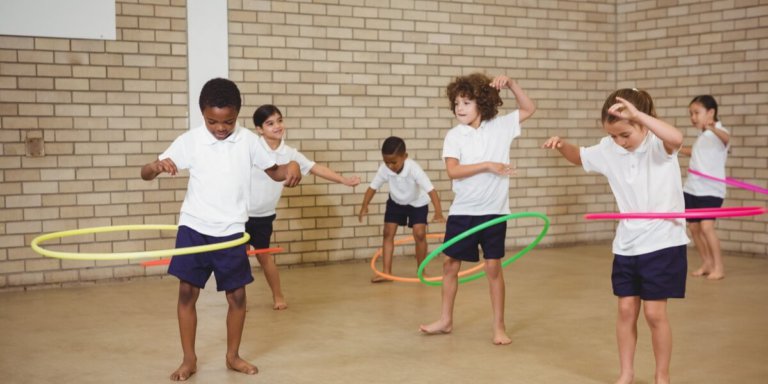
Physical activity in schools often only takes place in the form of physical education (PE) or after-school sports and games.
However, a new study has revealed the benefits of physically-active lessons, where exercise is embedded into classroom activities.
For example, students do star jumps or run on the spot to answer maths question, or use movement to signify whether a fact is true or false.
According to the study by the University College London and the University of Sydney, “The meta-analysis of 42 studies from around the world, published in British Journal of Sports Medicine, aimed to assess the benefits of incorporating physical activity in academic lessons.
“This approach has been adopted by schools seeking to increase activity levels among students without reducing academic teaching time.”
The study found that when children engage in physical activity during lessons, it “had a large, significant effect on educational outcomes, assessed through tests or by observing pupils’ attention to a given task.”
NEW research shows that physically active classroom lessons improve time on task, math and spelling in a sample of 2nd-6th graders, Szabo-Reed et al. 2019. pic.twitter.com/JBPMxUeHtK
— Dr. Lynne Kenney (@DrLynneKenney) September 30, 2019
Students were more focused when listening to their teachers, could concentrate better and displayed a higher attainment rate compared to control groups who didn’t engage in physical activity during school lessons.
The conclusion was made after researchers studied data from 12,663 students aged between three and 14, with most studies conducted in preschool or elementary schools worldwide.
Approximately half of the studies took place in the United States, with seven conducted in Australia, five in the UK, four in the Netherlands and one in China, Croatia, Ireland, Israel, Portugal and Sweden.
According to the study, “In one of the 42 studies analysed, eight- and nine-year-olds simulated travelling the world by running on the spot in between answering questions relating to different countries.
“In another study in the Netherlands, primary school children who took part in physically active lessons three times a week over two years made significantly better progress in spelling and mathematics than their peers – equating to four months of extra learning gains.
“The research team, also led by Dr Norris, concluded the children were more active and more focused on the task than peers in a control group, following teachers’ instructions more closely.”
Physical activity during lessons in schools provide a mental boost
I love being a teacher and getting students to do crazy things like this! 😂 #structuralfeatures #physicallyactivelessons https://t.co/0NmE05xXNB
— Mrs M Griffiths 📚 (@MrsMGriffiths) April 12, 2019
Based on the study, we can conclude that when kids are more active during class, their cognitive abilities and concentration increases.
Lead author Dr Emma Norris from the UCL Centre for Behaviour Change and UCL Psychology & Language Sciences said, “Physical activity is good for children’s health, and the biggest contributor of sedentary time in children’s lives is the seven or eight hours a day they spend in classrooms.
“Our study shows that physically active lessons are a useful addition to the curriculum. They can create a memorable learning experience, helping children to learn more effectively.”
Professor Emmanuel Stamatakis from the University of Sydney’s Charles Perkins Centre suggests that teachers introduce more physical activity in schools during lesson time.
He said, “Not all lessons need to be sedentary. Simple changes to classroom routines, like standing up to answer a question or running up to the board to write down an answer, could add up to overall school time physical activity and lead to improved academic performance.”
Teachers finding that their students are lacking concentration in class could try incorporating some exercises during lessons.
Not only does it make the class more fun, but kids receive additional opportunities to engage in physical activity while improving educational outcomes.
Liked this? Then you’ll love…
Studies reveal that kids today are lacking physical literacy







